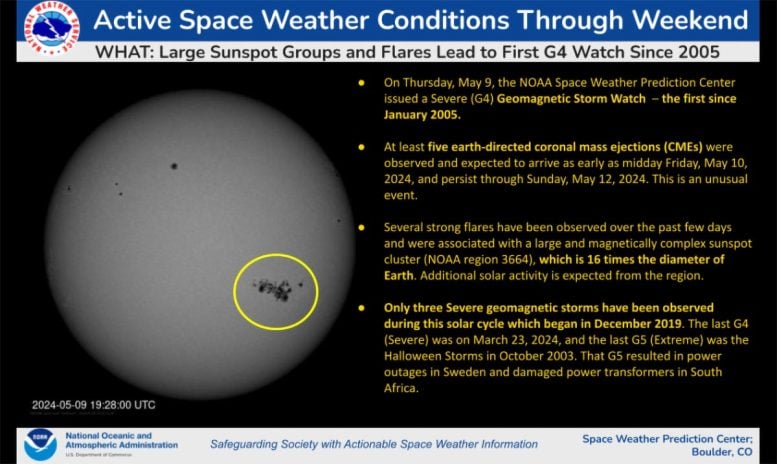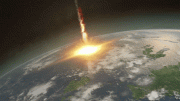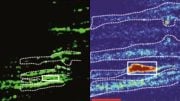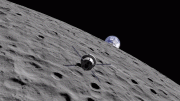
On May 9, 2024, the NOAA Space Weather Prediction Center issued a Severe (G4) Geomagnetic Storm Watch, prompted by the observation of five Earth-directed coronal mass ejections. Credit: SciTechDaily.com
On Thursday, May 9, 2024, the NOAA Space Weather Prediction Center issued a Severe (G4) Geomagnetic Storm Watch. At least five earth-directed coronal mass ejections (CMEs) were observed and expected to arrive as early as midday Friday, May 10, 2024, and persist through Sunday, May 12, 2024. Several strong flares have been observed over the past few days and were associated with a large and magnetically complex sunspot cluster (NOAA region 3664), which is 16 times the diameter of Earth.
- On Thursday, May 9, the NOAA Space Weather Prediction Center issued a Severe (G4) Geomagnetic Storm Watch – the first since January 2005.
- At least five earth-directed coronal mass ejections (CMEs) were observed and expected to arrive as early as midday Friday, May 10, 2024, and persist through Sunday, May 12, 2024. This is an unusual event.
- Several strong flares have been observed over the past few days and were associated with a large and magnetically complex sunspot cluster (NOAA region 3664), which is 16 times the diameter of Earth. Additional solar activity is expected from the region.
- Only three Severe geomagnetic storms have been observed during this solar cycle which began in December 2019. The last G4 (Severe) was on March 23, 2024, and the last G5 (Extreme) was the Halloween Storms in October 2003. That G5 resulted in power outages in Sweden and damaged power transformers in South Africa.










I commented that on the May 9th article about solar flares. Actually, since then, NOAA issued a G5 condition before this article was published, so it’s conditions not seen since October 2003’s Halloween Storm. Keep up, scitechdaily!